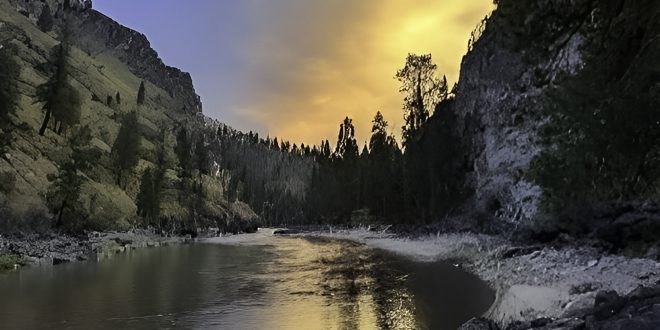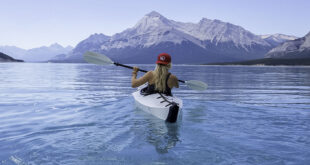In the summer of 2023, our tight-knit community of White Salmon, Washington, was rocked by tragedy. Three young men, all bright stars in their own way, died within the span of six months, by suicide, an unintended drug overdose, and a kayaking accident. The first had been a childhood friend of my son Che. The second was a school band leader and Che’s musical mentor. The third was a kayaking hero not only to Che and his paddling partner Zane, but to the entire community of young kayakers in our area. At seventeen, he was already a larger-than-life figure, paddling Class V from Africa to our local Little White Salmon, and was just setting out on his life’s journey when the accident cut everything short.
When it’s just you and your boat, getting down a river happens one moment at a time, one paddle stroke in front of the other.
When I heard the news about our young kayak friend, I let out a guttural roar. In anguish, I drove to town, to his house, to try to do something. Another friend was there, tears streamed down our faces; there was nothing we could do. I drove to my wife’s office, across from the elementary school where he had been a student, which seemed only a few years earlier. The principal, a big teddy bear of a man and a paragon of kindness in our town, was outside, trying to understand or walk his grief off. He came over to my wife and me, and we stood hugging and crying on the sidewalk, the air ominous and foreboding around us. How could we have known that his oldest son would be the next to die, ordering anti-depressants online and accidentally overdosing on fentanyl? All these young men were within a year of eighteen.
It was as if our village was cursed, that death was toying with us, showing us how fragile life really is. As the community pulled together behind the heartbroken families, it seemed that life teetered on the horizon of forever goodbyes, and we parents gathered our children closer. People held rallies shouting, “Keep living, don’t hide in fear!” but we were still stunned and shell-shocked. These young men were bright stars, and we saw the harsh reality that if they were vulnerable to death, all our children were.
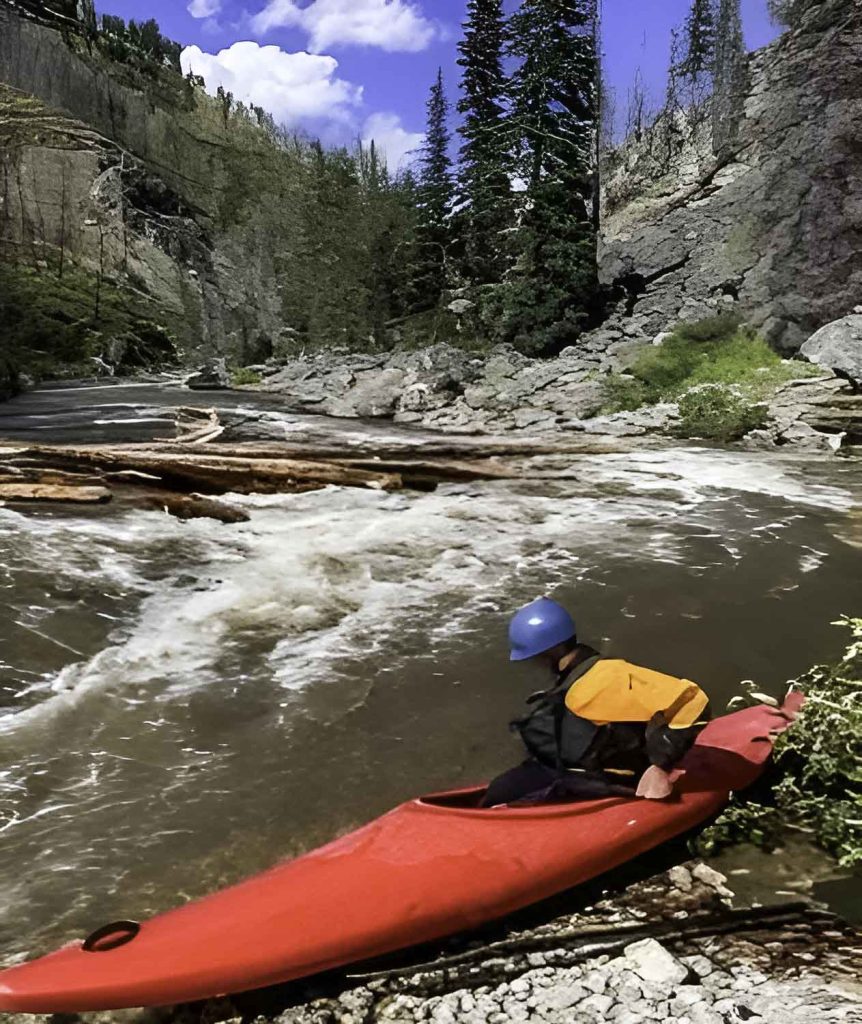
The Middle Fork of the Salmon River near Stanley, Idaho, is the second most sought-after multi-day whitewater run in the United States, after the Grand Canyon. A permit is required, and nearly impossible to get due to the high volume of applicants. A month or so after the third tragedy, I went over to my kayaking friend Jason’s house for a barbecue. Our sons, Che and Zane, were both seventeen and paddling buddies. As he flipped the burgers and handed me a beer, he casually mentioned he’d just gotten a permit for the Middle Fork. Jason is a whitewater fanatic and one of those who regularly checks the Middle Fork website for cancellations. Miraculously, a canceled permit came up, and he immediately grabbed it. As he watched, more cancellations popped up. ‘What is going on?’ he thought and searched the web for information. The breaking news was that in the last few days, torrential rains had triggered massive landslides on three major tributaries of the upper Middle Fork. Aerial photos from local news agencies showed half-mile-long logjams and a river totally rearranged and essentially blocked. Word was that all commercial and private trips had been immediately brought to a halt; there was no way a raft could get through.
“…and then I read about the landslides,” he told me, “so there’s just no way. I’ll cancel the permit tomorrow.”
I came back to reality as Jason explained what had happened. Something clicked inside me, and for some reason, I knew we were going to kayak this river and take Che and Zane with us.
“Don’t cancel that permit yet,” I said, and Jason raised his eyebrows.
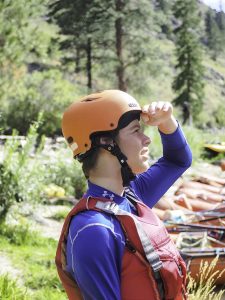
The next day, I called my cousin Mike, a commercial raft guide on the Middle Fork. I asked for first-hand beta; had anyone hiked in and actually seen the river? How bad was it? Could a kayak get through? He’d talked to a friend who had, in fact, already hiked in. He’d told Mike that of the rapids he’d been able to see, rafts were a no-go, but the thinnest of kayak lines did exist. In the back of my mind, I knew it would be possible to carry a kayak around any major obstacle, even up and over ridgelines when necessary. The danger would be in unexpected logs popping up once a boater had committed to a line, or unseen strainers lurking just below the surface that could snag a boat or a person.
Mike’s friend also said that the major rapids he’d scouted were unrecognizable to those familiar with the Middle Fork and backed up by logjams as long as a football field—that fit in with a feeling that was growing in me. Of the four of us, only Jason had paddled the Middle Fork, and that was only once, years before. We had no expectations; the river was unseen, unknown, a fresh start. All of us were skilled kayakers; we could play it safe and portage if there was any doubt. It would require effort, teamwork, and sweat. The deaths of their friends had rocked our sons hard, and now they stood uncertainly on the precipice of a world full of obstacles and danger. The safety of our children was paramount, but meeting this challenge head-on and successfully navigating this river, rearranged by the forces of nature, could reaffirm the goodness of life.
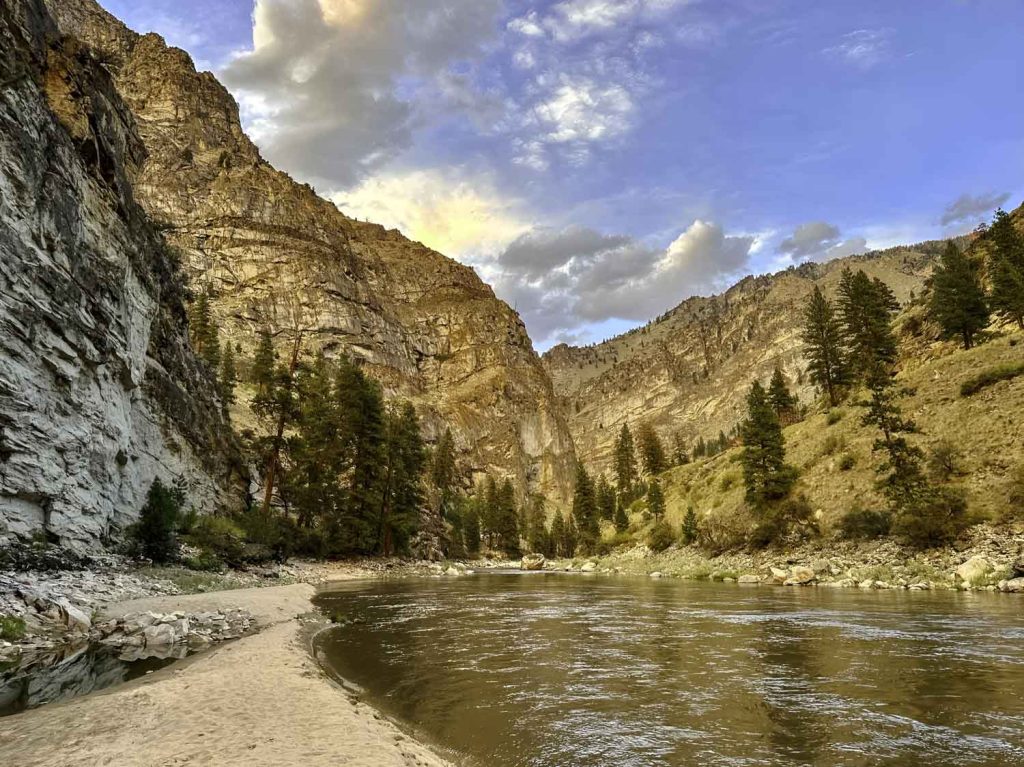
As fathers, we knew how precious this time with our sons was. They’d be leaving the nest soon, and taking them into the mountains, removed from the hazards of civilized society, felt protective and nurturing rather than dangerous. When it’s just you and your boat, getting down a river happens one moment at a time, one paddle stroke in front of the other. Skills, deliberate decision-making, and belief would carry us through. In my mind’s eye, I saw our campfires at night and felt the hot springs in my bones.
We got word from Mike that the forest service would open the access road one hour per day as they worked to rebuild washouts. The hard work was done; Jason and the boys were on board. We packed gear and food for a week and left White Salmon for Idaho.
There’s a camping area at the Middle Fork launch spot, and normally in August, it’s a zoo of people arriving, sorting and packing gear, and setting up tents. River friends reunite, and spirits are high in anticipation of a trip of a lifetime. We drove down quiet gravel roads toward the put-in, checked in with our wives one last time before losing cell service, then descended the final half mile into the canyon. At dusk, we parked in the empty lot next to the raft launch and walked down to survey the river. It looked peaceful, medium flows, no logjams in sight from here, nothing amiss. Returning to the campground, we took the prime spot. We still hadn’t seen anyone.
After setting up camp, we walked back to the launch area in the deepening cold, and two early-thirties guys climbed out of a truck, kayaks in the back. They planned to sleep right beside the launch and put in first thing in the morning. Like us, they had seized this opportunity, grabbed a canceled permit, and packed ultra-light boats to be prepared for anything they might find. I blanched a little when they told us they’d run the river “about forty times.” Back at camp, mist clouded our breath as we climbed into our sleeping bags.
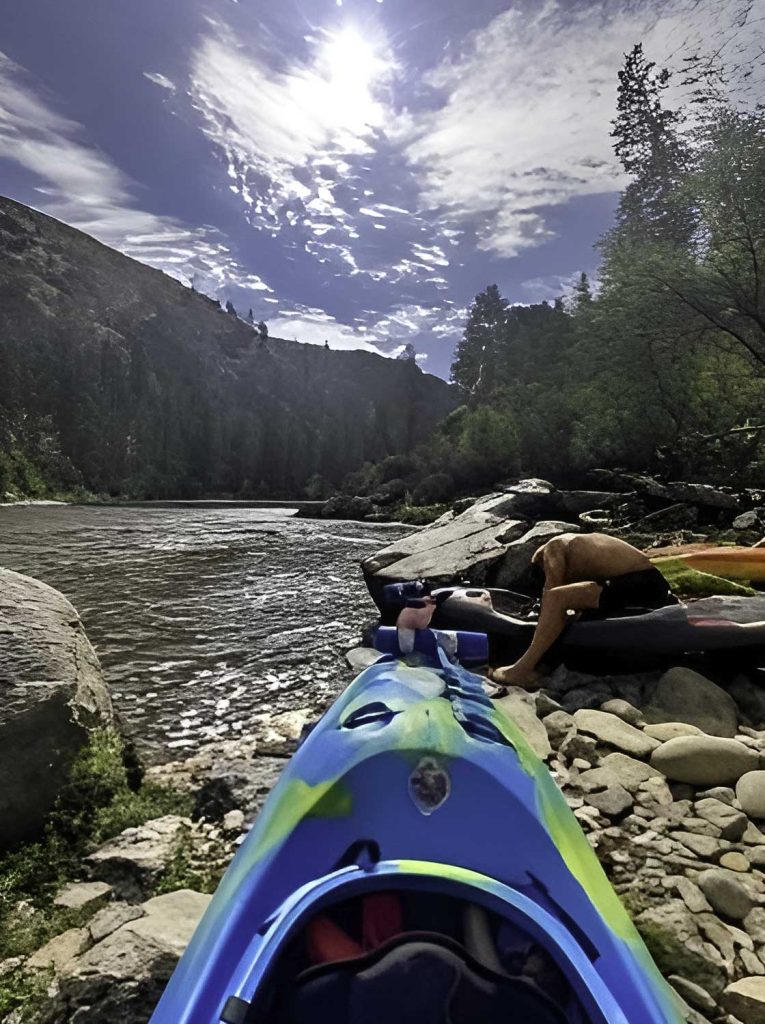
Morning broke clear and cold with a sense that this was the time––we were doing it. From there, it was like clockwork: breakfast, final boat packing, group safety talk on shore, then shoving off. We saw no sign of the other two kayakers. We were alone, headed downriver.
The trip turned out to be everything we’d hoped for. That first day, we stopped early at a hot springs seven miles downriver. Zane, in youthful fashion, was anxious to keep going, but Jason and I reasoned, “What’s the hurry? Here’s a hot spring, we’re here, let’s slow down and enjoy.”
Packing up that morning, I had tweaked my back, the scariest part of the whole trip for me. I hadn’t told anyone, but from the moment I felt my back seize up, I had been looking forward to this hot spring. The hot water healed my back, our campfire was just like in my dreams, and that evening we all found we were right where we were supposed to be.
The days blended together. Wake up, pack boats, paddle all day, watch the river carefully for strainers, campfire at night. There were lots of logs in the river, three major long portages, but nothing we couldn’t slog through. We played it safe, shouldered our boats when in doubt, and kept the boys close. With no one else on the river, the best campsites were wide open. We slept on long sandy beaches right next to the lap of water.
I don’t know if the bears proliferated because of the lack of humans, but they were everywhere. At two camps, we saw a mama and cubs padding out as we pulled in. One evening, we pulled into a mythically beautiful beach and watched two cubs climb, bend over, and eventually snap young willows just behind camp. We were quite cold but stayed in our boats until they lost interest in us and sauntered away.
At the time, I don’t think the trip was any big deal to Che and Zane, but I know it’s swirling around with their other memories. Maybe one day they’ll understand better when they are fathers and they take a trip where they eat like kings and paddle with princes.
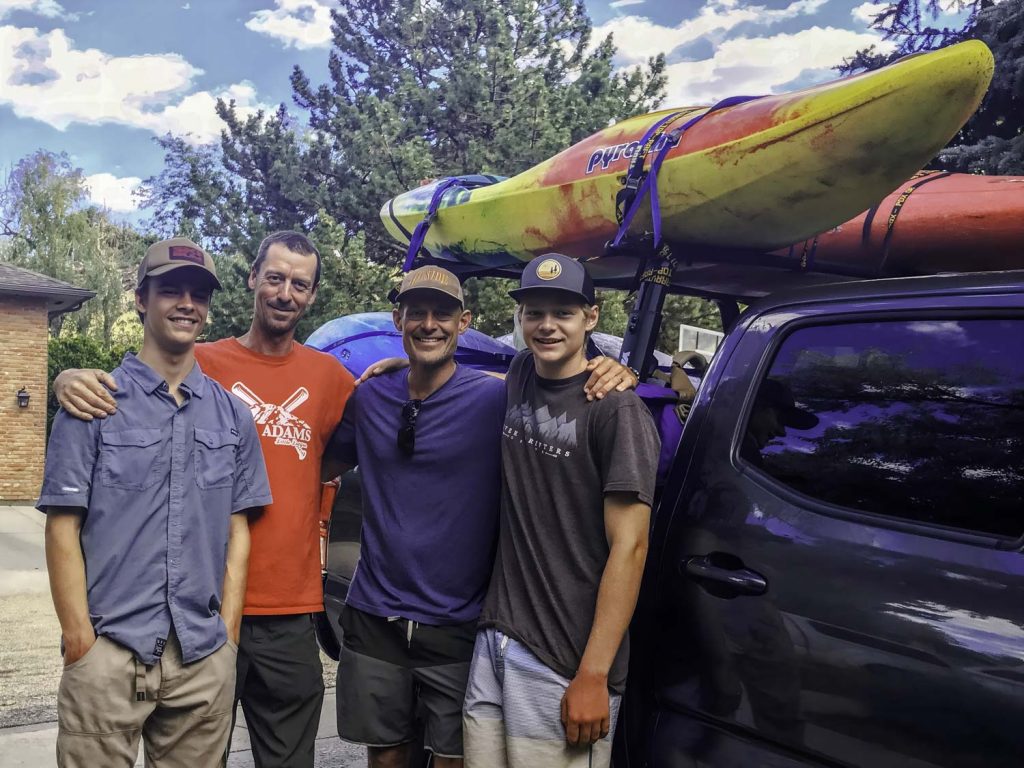
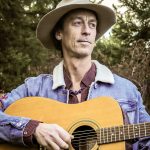 Richard Tillinghast has kayaked and camped from Nepal to the Pacific Northwest and now specializes in getting his children out into our wonderful world. He’s been everything from a horse wrangler to a raft guide to a musician. Find more stories and songs at www.richardtillinghast.com. He lives in White Salmon, WA.
Richard Tillinghast has kayaked and camped from Nepal to the Pacific Northwest and now specializes in getting his children out into our wonderful world. He’s been everything from a horse wrangler to a raft guide to a musician. Find more stories and songs at www.richardtillinghast.com. He lives in White Salmon, WA.
 AdventuresNW
AdventuresNW


